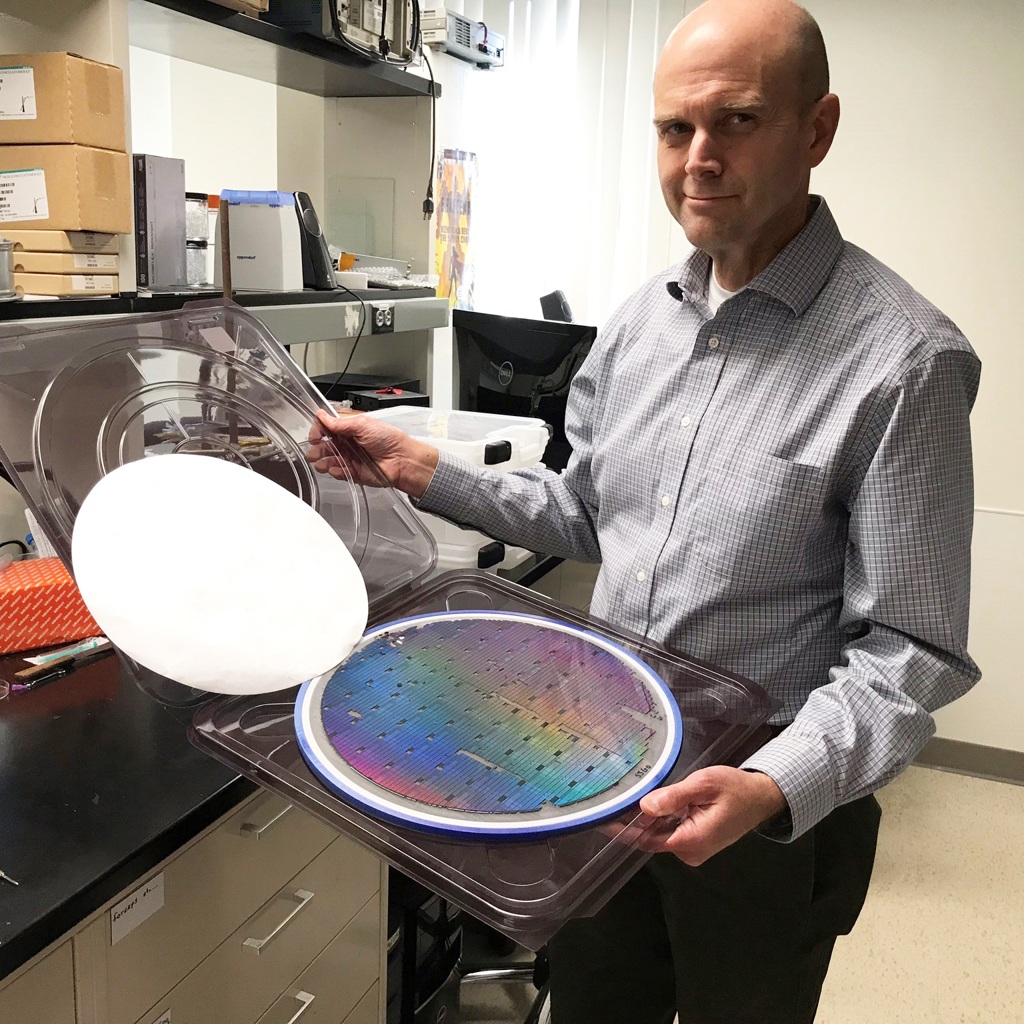Ben Miller
University of Rochester, USAFor pioneering science, engineering, and entrepreneurship in the design and manufacturing of integrated photonic biosensors.

Benjamin (Ben) Miller knew he wanted to be a university professor from a young age, and because he came from a family of engineers, he knew that science would probably be his path. However, he ran into a skeptical high school chemistry teacher who didn’t believe he had a future in chemistry. Ben defiantly decided to major in chemistry in college and found success. Despite this, Ben’s faculty advisor doubted he would get into Stanford University, USA, for chemistry, but again, he disregarded the negative advice and completed his PhD in chemistry at Stanford in 1994. He describes his career path as “contrarian” and shares that it “may not have been the [most highly] recommended way to do things, but that’s what happened.”
Since joining the University of Rochester, USA, his research has migrated from chemistry to optics and photonics because the chemistry projects he was doing required better measurements. He saw an opportunity to improve the optical devices he was using to do his measurements, and found that this was something he enjoyed. While making the transition from chemistry to optics, Ben found the optics department accepting and welcoming of his different skillset. He shares that he has always had interdisciplinary interests, and he was encouraged by his PhD supervisor to pursue them.
Today, Ben describes the goals of his lab as “building the interface between the universe and data.” Basically, the group works to find more and better ways to detect things through developing materials and sensors. Paired with Ben’s strong chemistry background, the group excels in the areas of diagnostics, bio and chemical sensing, and drug discovery. They also partner with AIM Photonics, USA, and other collaborators to develop and manufacture photonic devices. All of these ideas may sound scattered, but they are all actually very closely related through the foundation of detection.
Now is an exhilarating time for his field because both sides of Ben’s work are growing and gaining more recognition. Optics and photonics have proven to be an extremely useful field, and when applied to the many recent advances in biomedicine, the opportunities are exciting. Additionally, the fabrication of sensors and other devices has accelerated significantly. Ben comments, “Now we have things like AIM Photonics and their multi-project wafer offering where I can get more devices made in a single run than I would have made in a decade of research previously.”
Ben surrounds himself with people who have different research backgrounds from his own. He says that this is the most crucial thing in research because “you learn what the interesting problems are.” He goes on, “there are a lot of things that will be new, but the subset of things that are new and important is where you need to focus.” He finds the critical questions in his work by learning from his students, who bring new ways of thinking to the group given their diverse scientific backgrounds. His favorite part of research is when his students present solutions that he hadn’t thought of or when they bring forward unexpected results. It is genuinely in the unexpected that one can find new ways of doing things.
Photo Credit: Frank Tolic
Profile written by Samantha Hornback
